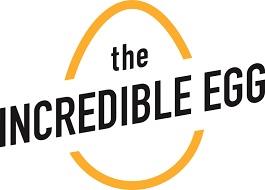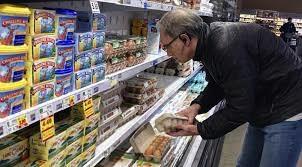 The American Egg Board (AEB) circulates Nielsen retail sales data as a service to the industry. The latest report released June 22nd reflected 52-week rolling sales and consumption of eggs and egg products for the period ending May 24th 2023. Since this time the National flock has increased by six million hens but at 315 million is still 16 million (4.5 percent) below the pre-HPAI level of 330 million. Wholesale prices have fallen 65 percent from $3.50 in early March 2023 to a mid-June plateau of $1.20. Nielsen data captures less than half of the combination of retail volume and sales value for shell eggs, consumer-packed liquid and hard-boiled peeled eggs. Data is derived from supermarkets, groceries, dollar outlets, drug and convenience stores all with annual sales in excess of $2 million. Some club warehouses provide data but Costco is excluded.
The American Egg Board (AEB) circulates Nielsen retail sales data as a service to the industry. The latest report released June 22nd reflected 52-week rolling sales and consumption of eggs and egg products for the period ending May 24th 2023. Since this time the National flock has increased by six million hens but at 315 million is still 16 million (4.5 percent) below the pre-HPAI level of 330 million. Wholesale prices have fallen 65 percent from $3.50 in early March 2023 to a mid-June plateau of $1.20. Nielsen data captures less than half of the combination of retail volume and sales value for shell eggs, consumer-packed liquid and hard-boiled peeled eggs. Data is derived from supermarkets, groceries, dollar outlets, drug and convenience stores all with annual sales in excess of $2 million. Some club warehouses provide data but Costco is excluded.
 The data assembled by Nielsen and distributed by the AEB for the past 52-weeks through May 24th 2023 documented sales of 3,109 million dozen egg-equivalents in all retail presentations over the 52-week period. This was essentially unchanged from the previous 52 weeks. The volume represents 60.5 percent of potential egg production updated on June 18th by the USDA for calendar 2023 totaling 7,871 million dozen eggs contributing to shell, liquid and exports. According to USDA data the shell-egg segment of the industry comprised 69.2 percent of all U.S. hens held for egg production during 2022.
The data assembled by Nielsen and distributed by the AEB for the past 52-weeks through May 24th 2023 documented sales of 3,109 million dozen egg-equivalents in all retail presentations over the 52-week period. This was essentially unchanged from the previous 52 weeks. The volume represents 60.5 percent of potential egg production updated on June 18th by the USDA for calendar 2023 totaling 7,871 million dozen eggs contributing to shell, liquid and exports. According to USDA data the shell-egg segment of the industry comprised 69.2 percent of all U.S. hens held for egg production during 2022.
- For the 52-week period in 2022-2023 ending on May 24th, retail sales of all shell-egg categories (shell, consumer liquid, hard boiled) expressed as egg-equivalents was constant despite higher prices. Dollar value was 55.5 percent higher to $11,095 million.. The USDA per capita consumption in 2022 was 279 eggs with a projection for 2023 of 285 eggs. The decrease in 2022 from the 2021 period resulted from flock depletion in two waves in the spring and fall of 2022 due to HPAI. Direct price comparisons are distorted by changes in buying patterns during COVID and the unprecedented price rises during the third and fourth quarters of 2022 due to HPAI-related imbalance between supply and demand. An additional potential factor relates to the amplification of price swings arising from the benchmark costing system in use. Projected per capita consumption in 2023 will attain 286 eggs per capita and 293 in 2024 according to the USDA.
- On a rolling 52-week basis, the volume captured by Nielsen comprising retail shell-egg sales attained 2,984 million egg-equivalent dozens. Shell egg value at retail was $10,545 million with an average unit value of $3.53 per dozen for the most recent 52-week period. Egg alternatives including liquid, frozen and powdered egg products converted to equivalent dozens attained 90.8 million dozen equivalents, a 1.7 percent decrease over the previous 52-week period but with a 13.8 percent increase in value to $346.1 million corresponding to a unit value of $3.81 per dozen. Rolling 52-week hard-boiled peeled egg sales attained 33.7 million dozen, with a 1.6 percent decrease in volume but a disproportional 13.6 percent increase in value to $203.8 million compared to the previous 52-week period reflecting a unit price of $6.04 per dozen over the past 52-week period.

- In classifying retail sales by product segment, conventional (caged) eggs represented 72.0 percent and cage-free 18.6 percent. Free-range and pastured combined amounted to 9.4 percent. This figure is however based on loose and inconsistent definitions of these categories of housing with evident deficiencies in capture of sales data. Rolling 52-week conventional (non-organic) egg sales decreased 2.2 percent in volume but the category was 47.7 percent higher in value.
- The report indicated that 6.8 percent of shell eggs were marketed under the USDA Certified Organic seal down 6.7 percent in volume but up 15.0 percent in value.
- With respect to volume of other than generic shell eggs, 52-week rolling branded egg sales comprised 28.6 percent of retail sales compared to 71.4 percent for private label. Branded eggs generated 35.9 percent of dollar value compared to private label at 64.1 percent. Branded eggs decreased by 6.9 percent in volume but increased 30.0 percent in value over the past 52 weeks.
- In analyzing retail channels for shell eggs for the rolling 52-week period, the value of sales by supermarkets and groceries (55.5 percent of sales volume) decreased by 7.3 percent, drugstores (0.1 percent of sales) were lower by 31.7 percent, convenience stores (1.0 percent of sales volume) were down by 8.5 percent and the combination of club stores, dollar stores and others (43.4 percent, excluding Costco, an important deletion given their volume) increased by 4.4 percent presumably with the largest contribution from big-box club stores other than Costco.
- Average retail prices per dozen as determined by the USDA were:-
October 2022, $3.42; November, $3.59; December, $4.25; January 2023, $4.82;
February, $4.21, March, $3.45 and April, $3.27.
- Egg servings at QSRs during the 3-month period, February 2022 to April 2023 increased 9.9 percent with commercial food service up by 10.7 percent, collectively representing 2,707 million servings.